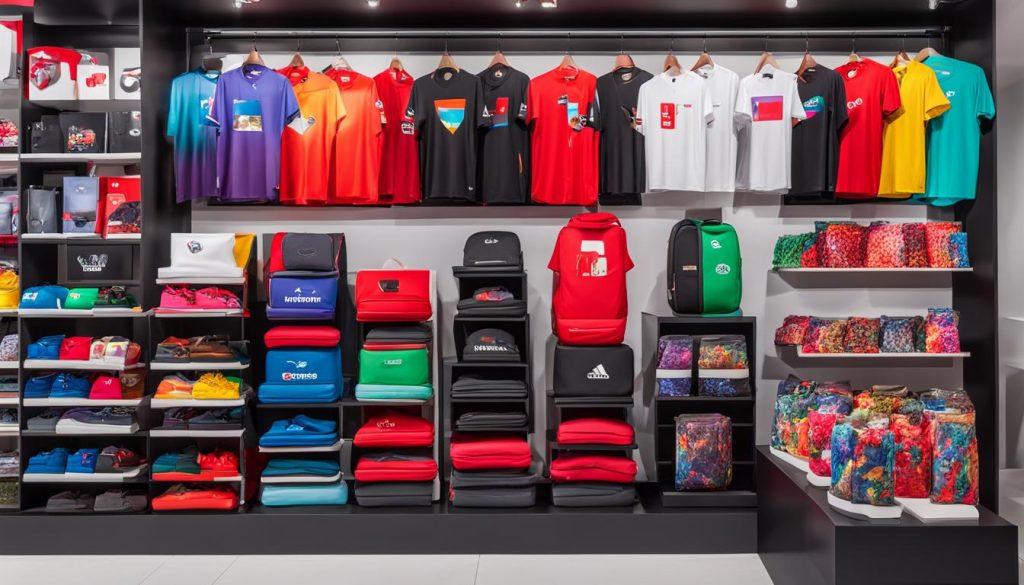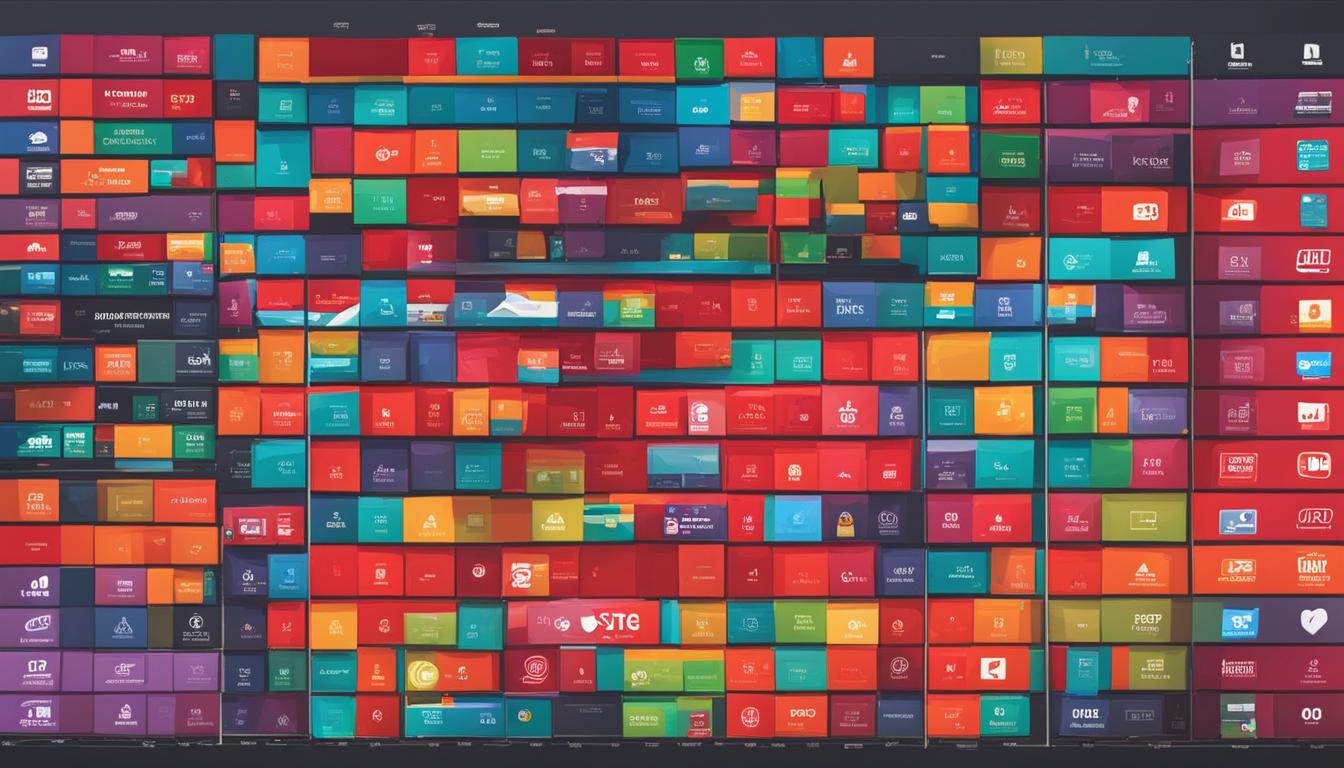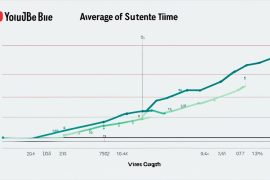Have you ever wondered how much money you can make from streaming videos on YouTube? Well, the answer may surprise you. YouTube pays creators based on the number of ad views their videos receive, rather than the total number of video views. This means that the more ads viewers watch on your videos, the more money you can earn. But how much does YouTube actually pay for each stream?
Let me tell you a story that will give you some insights into the world of YouTube streaming royalties. Meet Sarah, a talented musician with a passion for sharing her music with the world. Sarah started her YouTube channel a few years ago, posting covers of popular songs and original music. She steadily gained an audience, and her videos started to receive more and more views.
One day, Sarah received an email from YouTube inviting her to join the YouTube Partner Program. Excited about the prospect of earning money from her videos, she immediately signed up. After meeting the program’s requirements of having 1,000 subscribers and 4,000 watch hours in the past 12 months, Sarah became eligible for ad revenue.
As her channel continued to grow, Sarah started to earn money from the ads that played on her videos. She was delighted to see her hard work paying off, but she couldn’t help but wonder how much she was actually making from each play. So, she decided to dig deeper and find out the streaming payout rate on YouTube.
After doing some research and talking to other creators, Sarah learned that the actual amount of money earned per view can vary. Factors such as watch-through rate, location, industry, available ad formats, and competition all come into play. On average, YouTubers in the US earn around $0.01 to $0.03 per view, which translates to $10 to $30 per 1,000 views. However, it’s important to note that these figures are just estimates and the actual earnings can vary significantly.
Now that Sarah had a better understanding of how YouTube pays for streaming, she was motivated to continue creating high-quality content and engaging her viewers. She knew that building a loyal audience and maximizing her ad revenue potential were key to increasing her earnings.
If you’re considering starting a YouTube channel or already have one, it’s crucial to know how YouTube pays for ad views. Understanding the factors that affect your ad revenue and how to become eligible for ad revenue on YouTube can help you make the most out of your channel and reach your earning goals.
Key Takeaways:
- YouTube pays creators based on the number of ad views their videos receive.
- Creatos earn an average of $0.01 to $0.03 per view, which translates to $10 to $30 per 1,000 views.
- Factors such as watch-through rate, location, industry, ad formats, and competition can impact earnings.
- To become eligible for ad revenue, creators must join the YouTube Partner Program and meet certain requirements.
- Maximizing ad revenue requires creating engaging content and building a loyal audience.
How Does YouTube Pay for Ad Views?
YouTube pays creators based on the number of ad views their videos generate. Ad views refer to the number of views ads on a video receive, while video views reflect the total number of views the video itself gets. YouTube’s revenue model is built on the advertising space it offers, and creators earn money based on the number of ad views their videos generate. The amount of money earned per ad view can vary depending on several factors, including the watch-through rate, location, industry, available ad formats, and competition.
YouTube follows the CPM (Cost Per Thousand Impressions) model to determine the earnings from ads. CPM is the price an advertiser pays for 1,000 ad impressions on YouTube. Creators receive, on average, 55% of the revenue generated by ads, while YouTube retains the remaining 45%. This revenue share helps compensate creators for their content and encourages them to continue producing high-quality videos.
To maximize ad revenue, creators should focus on enhancing their watch-through rate, which measures how long viewers watch an ad before skipping or closing it. It is also important for creators to consider the location and industry they operate in, as these factors can influence the CPM rates. Additionally, the choice of available ad formats and the level of competition among advertisers can impact ad revenue.
By understanding these factors and optimizing their videos for ad views, creators can increase their earnings from YouTube’s ad revenue program and monetize their content effectively.
How to Become Eligible for Ad Revenue on YouTube
To start earning ad revenue on YouTube, creators need to join the YouTube Partner Program (YPP) and meet specific requirements. Here’s a step-by-step guide to becoming eligible:
Step 1: Reach 1,000 Subscribers and 4,000 Watch Hours
In order to join the YPP, creators must have at least 1,000 subscribers and accumulate 4,000 watch hours on their YouTube channel in the past 12 months. This shows YouTube that you have an engaged audience and are consistently creating content.
Step 2: Comply with YouTube’s Monetization Policies and Community Guidelines
YouTube has strict guidelines and policies in place to ensure a safe and positive environment for its users. Creators must adhere to these guidelines, which include avoiding copyrighted content, following advertiser-friendly content standards, and respecting community rules. Make sure to review and comply with these policies to maintain eligibility for ad revenue.
Step 3: Link an Active AdSense Account
Creators need to have an active AdSense account linked to their YouTube channel. AdSense is Google’s advertising platform that helps creators monetize their content. Linking your AdSense account allows YouTube to display ads on your videos and track your ad revenue earnings.
Step 4: Verify Your YouTube Account
Ensure that your YouTube account is verified. Verification provides an added layer of security and authenticity to your channel. It helps establish trust with both YouTube and your viewers, which is important when monetizing your content.
Step 5: Live in an Eligible Country/Region and Have Advanced Features Access
YouTube’s Partner Program is currently available in select countries and regions. Make sure you reside in a location where the program is available. Additionally, you need to have advanced features access on YouTube, which allows you to access monetization tools and features.
Step 6: Enable 2-Step Verification
It is recommended to enable 2-Step Verification for your Google Account, which includes your YouTube channel. This adds an extra layer of security to your account and helps protect your content and earnings.
By following these steps, you can become eligible for ad revenue on YouTube and start monetizing your videos.
“To become eligible for ad revenue on YouTube, creators must join the YouTube Partner Program (YPP) and meet certain requirements.”
Factors That Affect YouTube Ad Revenue
When it comes to ad revenue on YouTube, several factors come into play, influencing the amount of income creators can generate. Understanding these factors can help content creators make informed decisions and optimize their revenue potential. Let’s explore the key factors that affect YouTube ad revenue:
- Watch-Through Rate: The watch-through rate measures how long viewers watch an ad before skipping or closing it. Higher watch-through rates indicate viewer engagement and can potentially lead to higher ad revenue.
- Location: YouTube’s CPM (Cost Per Thousand Impressions) varies per region. Ad revenue can be affected by the location of the viewers, with certain regions commanding higher CPM rates than others.
- Industry Rates: Different industries may have different CPM rates. The industry in which a creator operates can impact the potential ad revenue they can earn.
- Ad Formats: The available ad formats on YouTube can have an impact on the views and the CPM rates. Some ad formats may result in better views and higher CPMs, leading to increased ad revenue for creators.
- Competition: Higher competition among advertisers can drive up the bidding process for YouTube ads, resulting in higher CPM rates and increased ad revenue for creators.
- Revenue Share Agreements: Creators can check their revenue share agreements in their YouTube Studio Settings to understand the specific revenue share rates for different modules, such as the Commerce Produce Module and the Watch Page Monetization Module.
By considering these factors and optimizing their content and strategies accordingly, creators can maximize their ad revenue potential on YouTube.
Average Earnings from YouTube Ad Views
When it comes to earning money from ad views on YouTube, the average earnings can vary significantly. On average, YouTubers in the United States earn approximately $0.01 to $0.03 per view, which is equivalent to $10 to $30 per 1,000 viewsImage. However, it’s important to understand that these figures are generalizations and can be influenced by various factors, including the watch-through rate, location, industry, available ad formats, and competition.
It’s worth noting that these earnings are specifically for ad views and not the overall video views. In reality, the actual earnings for every 1,000 video views could be around $5 to $7Image. It’s essential for creators to have a clear understanding of these numbers to manage their expectations and plan their monetization strategies effectively.
It’s also important to remember that the earnings mentioned above are solely from ad views and do not include the potential income from other sources, such as endorsements or partnerships. Having a diverse monetization strategy can further enhance a creator’s revenue on YouTube and provide additional financial stability.
YouTube Super Chat and Additional Revenue Streams
In addition to ad revenue, creators have various monetization methods on YouTube that can contribute to their earnings. Let’s explore some of these additional revenue streams:
1. Super Chat
Super Chat is a feature that allows viewers to purchase chat messages that stand out during live streams. By using Super Chat, viewers can pay to have their messages prominently displayed in the chat section, enabling them to gain the creator’s attention and ensure their messages are noticed. Creators receive a portion of the revenue generated from Super Chat sales, providing them with an additional source of income.
2. Channel Memberships
Another way for creators to monetize their YouTube channels is through channel memberships. Viewers can choose to become channel members by paying a monthly fee, typically in exchange for exclusive content, perks, or early access to videos. This model allows creators to offer additional value to their most dedicated fans while generating consistent recurring revenue.
3. Merchandise Sales

Creators can leverage their unique brand and audience by selling merchandise through YouTube. They can create their own branded merchandise such as t-shirts, hoodies, hats, or even personalized products related to their content. By providing fans with the opportunity to purchase and wear their merchandise, creators can generate revenue and strengthen their connection with their audience.
4. Patreon and Crowd-funding Platforms
Patreon and other crowd-funding platforms offer creators the chance to establish a direct support system from their fans. Through Patreon, creators can offer various membership tiers, each with its own benefits and perks. Fans can choose to financially support the creator on a monthly basis, unlocking exclusive rewards and content in return.
5. Sponsorships and Brand Deals

As creators grow their channels and establish themselves as influential figures in their niche, they may attract sponsorships and brand deals. Sponsors are willing to pay creators to promote their products, services, or brands to their audience. These partnerships can be a lucrative source of income for creators, especially when they align with their content and resonate with their viewers.
Overall, while ad revenue and Super Chat are important monetization methods on YouTube, creators often find that combining these methods with additional revenue streams significantly enhances their earnings potential. By diversifying their income sources, creators can create sustainable businesses around their YouTube channels and continue to produce high-quality content for their audience.
YouTube Monetization Requirements and Live Streaming
To monetize live streams on YouTube and start earning revenue, creators need to meet the eligibility requirements for the YouTube Partner Program. These requirements include having at least 1,000 subscribers and accumulating 4,000 hours of public watch time within the last 12 months. Once creators meet these criteria, they can begin monetizing their live streams and earning money through various channels.
There are two primary ways to earn revenue from live streams on YouTube.
Ad Revenue:
When creators monetize their live streams, ads are inserted into their content, allowing them to generate revenue. The number of ads that appear during a live stream depends on the length and engagement of the stream. The ad revenue earned from live streams is comparable to revenue generated from regular video uploads. However, it’s important to note that the actual earnings from live stream ad revenue can vary significantly based on factors such as audience demographics, viewer engagement, stream time and frequency, niche, and content type.
Super Chat:
In addition to ad revenue, creators can also earn money through Super Chat. Super Chat is a feature that allows viewers to purchase chat messages that stand out during the live stream. When viewers make a Super Chat purchase, their message is highlighted in a vibrant color and pinned to the top of the chat for a set period, giving them enhanced visibility. Creators receive a portion of the revenue generated from Super Chat purchases, making it another valuable source of income during live streaming sessions.
While live streams provide creators with the opportunity to earn revenue through ad placements and Super Chat, it’s crucial to keep in mind that the actual earnings can vary based on several factors. These factors include the demographics and engagement of the audience, the duration and frequency of the streams, the chosen niche or content category, and the overall popularity of the content creator. By understanding these factors and creating engaging live streams that resonate with their audience, creators can maximize their potential earnings from this revenue stream.
By meeting the eligibility requirements for the YouTube Partner Program and exploring the monetization options available through ad revenue and Super Chat, creators can unlock the potential to earn revenue from their live streams on YouTube. It’s important to continuously engage with the audience, provide valuable content, and explore different strategies to maximize the earning potential of live streaming on YouTube.
Conclusion
In conclusion, the earnings potential on YouTube is determined by various factors such as ad views, watch-through rate, location, industry, and ad formats. To monetize their videos and start earning ad revenue, creators must join the YouTube Partner Program and meet specific requirements such as having 1,000 subscribers and 4,000 watch hours within the past 12 months. On average, YouTubers in the US earn around $0.01 to $0.03 per view, which can translate to $10 to $30 per 1,000 views.
However, YouTube monetization doesn’t stop at ad revenue. Creators have the opportunity to supplement their earnings through additional monetization options. Super Chat allows viewers to purchase chat messages that stand out during live streams, while channel memberships offer exclusive content and perks for a monthly fee. Selling merchandise, utilizing Patreon, and securing sponsorships also provide creators with additional revenue streams.
To maximize their earnings potential, creators should focus on creating engaging content, building a loyal audience, and exploring different monetization options. By diversifying their income sources and consistently delivering valuable content, creators can unlock greater revenue opportunities on YouTube.
FAQ
How much does YouTube pay for streaming in 2024?
YouTube pays creators based on the number of ad views their videos receive, rather than the total number of video views. The actual amount of money earned per view can vary depending on factors such as watch-through rate, location, industry, available ad formats, and competition. On average, YouTubers in the US earn around $0.01 to $0.03 per view, which translates to $10 to $30 per 1,000 views. However, this is a generalization and the actual earnings can vary significantly.
How does YouTube pay for ad views?
YouTube pays creators based on the number of ad views their videos generate. Creators receive, on average, 55% of the revenue generated by ads. The amount of money earned per ad view can vary depending on factors such as watch-through rate, location, industry, available ad formats, and competition.
How to become eligible for ad revenue on YouTube?
To become eligible for ad revenue on YouTube, creators must join the YouTube Partner Program (YPP) and meet certain requirements. These requirements include having 1,000 subscribers, 4,000 watch hours in the past 12 months, complying with YouTube’s monetization policies and community guidelines, having an active AdSense account linked to their YouTube channel, and meeting other eligibility criteria.
What factors affect YouTube ad revenue?
Several factors can affect the amount of ad revenue earned on YouTube. These factors include the watch-through rate, location, industry, available ad formats, and competition. Creators can check their revenue share agreements in their YouTube Studio Settings to see the specific revenue share rates for different modules.
What are the average earnings from YouTube ad views?
On average, YouTubers in the US earn around $0.01 to $0.03 per view, which translates to $10 to $30 per 1,000 views. However, these numbers are generalizations and can vary depending on factors such as watch-through rate, location, industry, available ad formats, and competition. It’s important to note that these earnings are specifically for ad views and not video views.
What are YouTube Super Chat and additional revenue streams?
YouTube Super Chat is a feature that allows viewers to purchase chat messages that stand out during live streams, providing an additional revenue stream for creators. Additionally, creators can earn money through channel memberships, selling merchandise, creating content for Patreon, and securing sponsorships or brand deals.
What are the YouTube monetization requirements and live streaming?
To monetize live streams on YouTube, creators need to meet the eligibility requirements for the YouTube Partner Program. These requirements include having 4,000 hours of public watch time and 1,000 subscribers within the last 12 months. Creators can earn revenue from live streams through ad revenue and Super Chat, among other methods.
What is the conclusion on YouTube streaming earnings?
YouTube pays creators based on ad views, with the actual earnings varying based on various factors. In addition to ad revenue, creators can earn money through Super Chat, channel memberships, merch sales, Patreon, and sponsorships. It’s important for creators to maximize their revenue by creating engaging content, building a loyal audience, and exploring different monetization options on YouTube.






